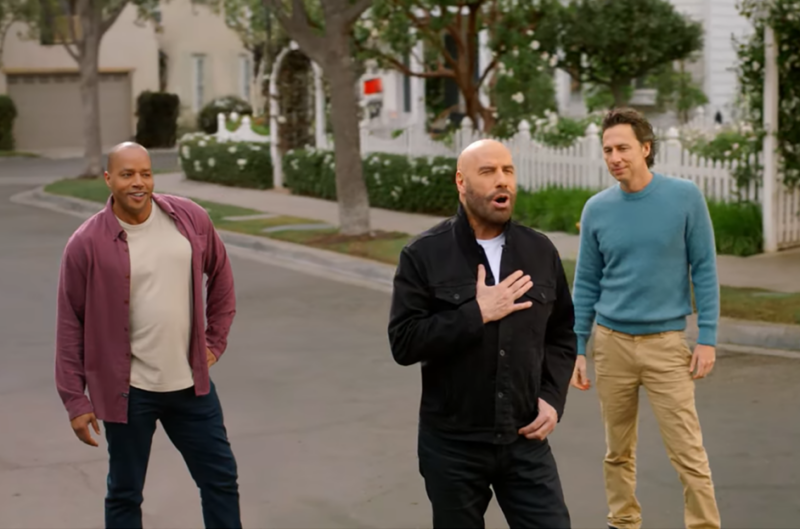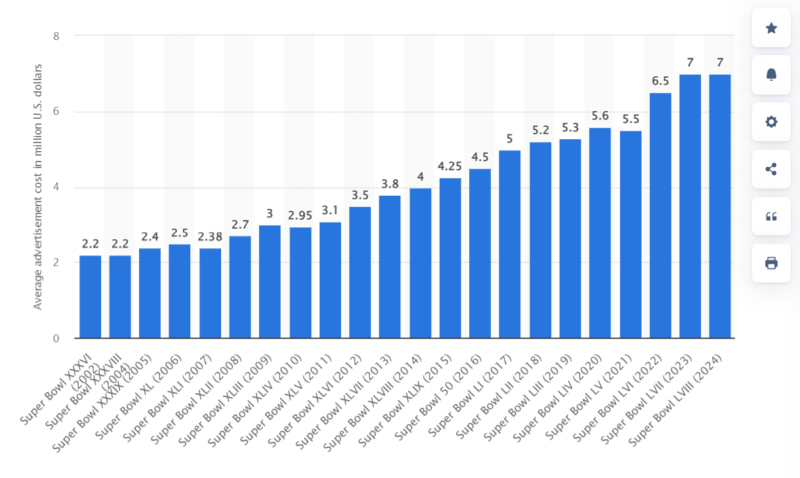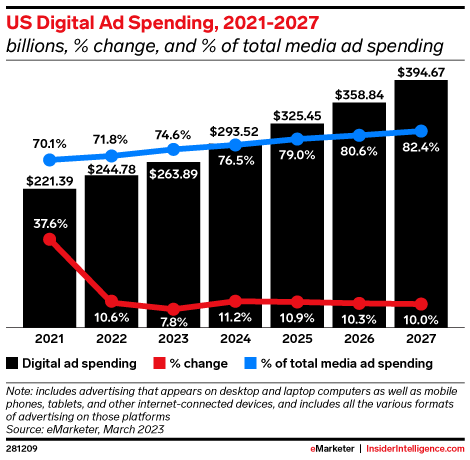Is spending millions on a Super Bowl ad really worth it?
Advertising during one of the nation’s biggest events like the Super Bowl has become a massive industry. Brands invest heavily, hoping to capture your attention and boost their profile. But are they actually decent at bringing in ROI, or are they a money sink?
This post will explore the effectiveness of ad spending on these major events, focusing on brand awareness and return on investment (ROI). Let’s dive into whether Super Bowl commercials deliver the results companies expect.
The Impact of Super Bowl Advertising
The most predictable metric Super Bowl advertising can increase is brand awareness.
Data shows that 41% of consumers notice brands more and are more likely to purchase from them after watching Super Bowl ads. This extra attention can lead to better brand recall and recognition.
How Major Brands Handle Super Bowl Ads
Every brand that fronts all of the advertising dollars for a Super Bowl advertisement is set on their ad being the best Super Bowl commercial, which is why it’s such a competitive advertising window, and therefore demands such a high placement cost.
1) Coca-Cola
Coca-Cola’s ads are all about feel-good moments. They focus on themes like unity and positivity, using heartwarming stories that make people smile and remember the brand fondly.

(Image Source: YouTube, Coca-Cola)
2) Bud Light
Bud Light loves humor. Their Super Bowl ads often feature funny characters and pop culture references, keeping things light and entertaining. It’s all about making people laugh and think of Bud Light when they do.
The big beer brand highlighted its Anheuser-Busch brew through the introduction of the “Bud Light Genie”:

(Image Source: Variety)
3) T-Mobile
T-Mobile goes for high energy and star power. Their ads often feature celebrities and highlight the benefits of their network in a fun, dynamic way. It’s about showing off their cool factor and staying memorable.
In 2023’s Super Bowl ad, they featured Donald Faison, John Travolta, and Zach Braff singing a parody of “Summer Nights” from Grease:

(Image Source: YouTube, T-Mobile)
High-profile Super Bowl ads can have long-term benefits for brands. Even if the immediate return on investment isn’t clear, the increased brand awareness can lead to future customer engagement and loyalty, making it a good investment.
These benefits are significant, but how can you get the most out of Super Bowl advertising? Consider these strategies to make the most of your ad spend:
- Invest in creative, memorable content that stands out. Don’t settle for a generic ad. Surprise and delight viewers with humor, heartwarming stories, or celebrity cameos. The more unique and engaging your Super Bowl ad, the more likely it is to be remembered and talked about long after the game is over.
- Use social media to extend the reach of your Super Bowl ad. Don’t let the impact of your ad stop after the final whistle. Create a social media buzz by teasing snippets of your ad beforehand, encouraging viewers to share their reactions during the game, and posting behind-the-scenes content afterward. This will keep your brand at the forefront of the conversation and amplify the reach of your Super Bowl investment.
- Track performance metrics to measure brand awareness and recall. While the impact of a Super Bowl advertisement can be undeniable, quantifying its success requires data. Track key metrics like social media mentions, website traffic, and brand search volume before, during, and after the game. This will help you understand the effectiveness of your ad and guide future marketing strategies.
- Combine TV ads with digital campaigns for a cohesive strategy. A Super Bowl advertisement is a powerful starting point, but it shouldn’t be the end of your marketing efforts. Develop a cohesive marketing campaign that integrates your TV ad with targeted digital campaigns on platforms like YouTube, Facebook, and Instagram. This allows you to build upon the initial brand awareness from the Super Bowl commercial and connect with viewers on a more personal level.
Key Takeaway: Super Bowl commercials can significantly boost brand awareness, providing long-term benefits even if immediate ROI is not clear.
ROI Challenges
The average cost of a Super Bowl advertisement is astronomically high. During last year’s Super Bowl, a 30-second spot cost about $7 million, and it was about that amount again in 2024.
This makes it hard to measure the direct return on investment (ROI) from such an expensive ad. After all, it’s the nature of offline advertising, which the category of TV advertisements during the Super Bowl would fall under.

(Image Source: Statista)
John Wanamaker’s famous quote about not knowing which half of advertising works still rings true when we look at Super Bowl commercials today.
Modern tracking and privacy laws have made it even harder to measure ROI accurately, making the process more complex for marketers. We all need to adjust to this reality.
“Half the money I spend on advertising is wasted; the trouble is I don’t know which half” – John Wanamaker
To deal with these challenges, consider these strategies to improve your advertising efforts:
- Use data analytics to track customer engagement before and after the event. Don’t fly blind when measuring the impact of your Super Bowl ad. Utilize data analytics tools to track website traffic, social media mentions, and brand search volume. Analyze this data both before and after the Super Bowl to understand how your ad influenced customer behavior. This will help you identify trends and optimize your marketing strategies for future campaigns.
- Include call-to-action elements to drive measurable responses. For a Super Bowl advertisement to be truly effective, it should prompt action. Incorporate clear calls-to-action (CTAs) within your ad, such as encouraging viewers to visit your website, download an app, or use a specific promo code. Track the responses to these CTAs to gauge the effectiveness of your ad in driving conversions and achieving your marketing goals.
- Use social media to gauge audience reactions in real-time. Social media is a powerful tool to measure audience sentiment toward your big game commercial in real-time. Monitor social media conversations during the game to watch how viewers are reacting to your ad. Analyze the sentiment of these discussions (positive, negative, or neutral) to understand audience perception and make adjustments to your marketing strategy if necessary.
- Consider a multi-channel, approach to spread out your ad spend. While a Super Bowl advertisement can be a strategic investment, it’s not the only option. Consider adopting a multi-channel marketing approach that allocates your advertising budget across various platforms. This could include digital ads, paid social media campaigns, influencer marketing, or even local partnerships. By diversifying your advertising channels, you can reach a wider audience and potentially see a greater return on your overall marketing investment.
Key Takeaway: Measuring ROI for Super Bowl ads is tough, but using data analytics and a multi-channel approach can help get the most out of your investment.
Alternative Advertising Channels
Digital paid ads offer a different approach compared to Super Bowl ads. Platforms like Google and Facebook provide better targeting and tracking, making it easier to measure direct ROI.
Combining TV ads with digital campaigns can create a stronger marketing strategy. This method uses the wide reach of TV and the precise targeting of digital ads. After all, digital ads are still on a strong trajectory of efficiency and success, indicated by the exponential rate at which advertisers are pouring their marketing dollars into them.

(Image Source: Insider Intelligence)
To get the most from your advertising budget, try these strategies:
- Align TV and digital ads to strengthen your brand message across different platforms: Don’t let your message get lost in translation between TV and digital. Ensure your Super Bowl advertisement and its supporting digital ads (like social media posts or website banners) cohesively communicate the same brand message.
This creates a unified brand experience for viewers, regardless of where they encounter your content. By using consistent visuals, messaging, and brand voice across all channels, you can maximize the impact of your campaign and reinforce brand awareness long after the Super Bowl has ended. - Use social media to connect with your audience before, during, and after major events like the Super Bowl: Social media is a powerful tool to engage with your audience and build anticipation for your Super Bowl commercial. In the weeks leading up to the game, use social media to tease snippets of your ad, run contests to generate excitement, and encourage viewers to share their predictions. During the Super Bowl, leverage social media to encourage real-time reactions to your ad and participate in the larger conversation surrounding the game.
After the game, continue the conversation by sharing behind-the-scenes content. Respond to audience feedback, and promote special offers related to your ad. This omnichannel approach will help you connect with your audience on a deeper level and amplify the reach of your Super Bowl investment. - Track performance metrics across all channels to see your ad’s impact: The effectiveness of your marketing campaign goes beyond just the ad itself. Track key performance indicators (KPIs) across all channels, including website traffic, social media engagement, brand mentions, and sales conversions. This comprehensive data will help you understand how your Super Bowl advertisement, combined with your digital marketing efforts, is influencing customer behavior and achieving your overall marketing goals.
- Try A/B testing different ad creatives to find out what works best with your audience: Don’t settle for a single Super Bowl ad concept. Use A/B testing to create and test different versions of your ad with varying elements like visuals, messaging, or calls to action.
Show these variations to a small audience and analyze which one resonates best. This data-driven approach allows you to refine your Super Bowl commercial before it is aired nationally, increasing the chances of it catching the attention of your target audience and delivering a strong return on investment (ROI) from your ad.
Key Takeaway: Combining television and digital ads can create a more effective, integrated marketing strategy.
Last Thoughts on Super Bowl Advertising
Super Bowl ads can greatly increase brand awareness and recognition. The immediate return on investment might not be clear, but the long-term benefits can make it worth the cost.
However, the high costs and tracking difficulties mean that Super Bowl advertising should be part of a larger strategy. Combining TV ads with online campaigns can maximize your reach and effectiveness.
Always consider your marketing goals and budget before making a decision. With the right mentality about how your ad will make an impact on brand awareness and revenue down the line, a commercial during the Super Bowl may be the right move for your brand.
Related Video
If you’re ready to level up your digital marketing, Single Grain’s marketing experts can help!👇
For more insights and lessons about marketing, check out our Marketing School podcast on YouTube.






